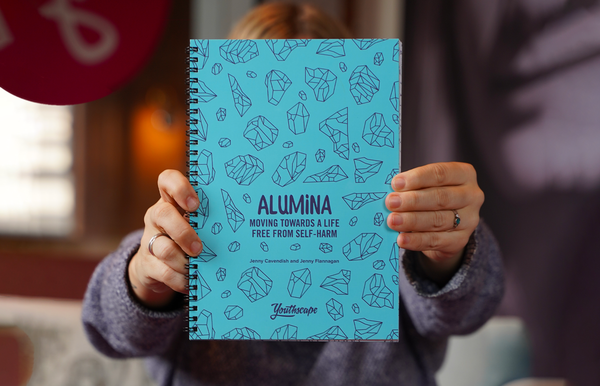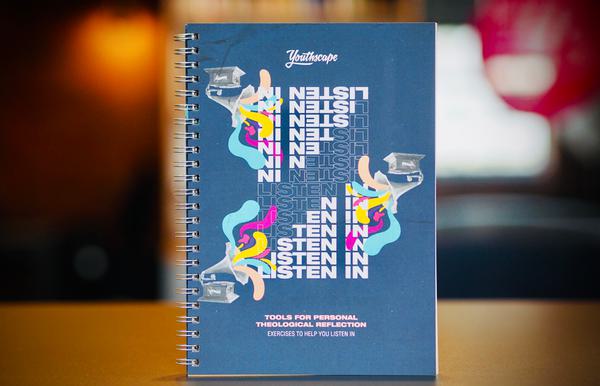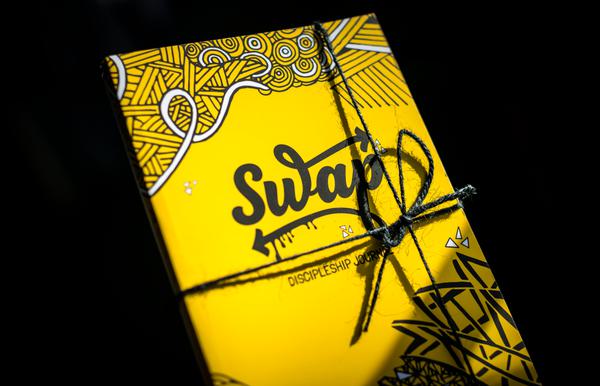A smartphone app is not the product solution you’re looking for! Our Director of Innovation explains why creative, pioneering work requires thinking beyond what’s already popular.
As we try to navigate our emergence from an uncertain couple of years, youth ministry needs to innovate more than ever. Of course, I would say that – I literally have ‘innovation’ in my job title. Yet, even if you take a remarkably optimistic view of the present situation (and like many others, I’m afraid I don’t), there is still a huge opportunity after the pandemic's enforced break to reinvent our work with young people, and to finally put down those approaches that are no longer effective. This is a moment for new things – for whole new models of youth work; for relevant new resources. But as we start to think creatively about what we could do, it’s so important that we don’t default to the obvious. We don’t have many catchphrases in the Youthscape Innovation department, but we do have one: “It’s never an app”. And as we try to plan ahead, I think it’s vital that we share some of the thinking behind that slightly odd phrase. Here’s what it means...
The ‘availability heuristic’
In the field of behavioural economics, there’s a popular theory called the ‘availability heuristic’ (heuristic is a fancy word for ‘rule of thumb’). It’s the idea that in decision-making, we are naturally biased towards things that we can most easily recall, or that we associate with whatever we’re considering, often because of their vividness. An example is the irrational fear that the plane we’re sitting on might crash – even though planes almost never crash. This specific fear arises because the miniscule number of planes that do crash always make headline news, and the millions of flights that land and take off safely each year never do. Thus, we think that a plane crash isn’t just possible, but even quite likely, even though the real odds are akin to those of a lottery win.
It’s really important to be aware of our biases when we’re trying to think creatively, and the availability heuristic – our brains’ implicit reading of the world as we experience it – is an especially challenging one. In practice, it tends to mean that we risk jumping to conclusions about two things: the nature of the needs or interests in our community or ‘market’, and the shape of the solution. We might assume for example, that because we feel something strongly, or that our immediate friends and family do, then this emotional response is replicated more widely. But this is flawed; we tend to surround ourselves with like-minded people after all, and so just because our immediate circle behaves in a certain way (for example, in political voting), it doesn’t follow that we are representative of the majority. Yet if our friends reflect our own views, then we naturally feel like ours is the popular position. On the social networking site Twitter for example, which tends to lean heavily toward the left wing politically, users have often been led to confidently believe that the site was only demonstrating a wider leftward shift in society (and then been sorely disappointed by a subsequent election). This is the availability heuristic in action – skewing our ability to read our context correctly.
“People love Escape Rooms!”
The second risk here is that our biases might confidently cause us to leap toward a solution or idea, because that idea is currently popular or prominent. For example, as I write, the Escape Room has become a popular and, in some cases, profitable entertainment experience. Everyone knows this, but they are perhaps less aware of the recent proliferation – and therefore market saturation – of Escape Rooms and related experiences. The availability heuristic means that in a brainstorm, we might suggest and feel wedded to the idea of an Escape Room as a creative solution, “because people love Escape Rooms.” While this is true, it discounts other important factors (e.g. are these experiences now on the way out? Is the field too competitive?) and promotes one idea above others because of familiarity and our own recent positive engagements. [Full disclosure – Youthscape literally JUST worked on a new escape-room-style adventure.]

Why “it’s never an app”
Perhaps the ultimate example of the availability heuristic and its dangerous influence on brainstorms is the idea that the solution to any given problem is... a smartphone app. The enormous proliferation of apps, democratised by open-source development, means that quite a few phenomena have emerged in this medium in the past decade. Pokémon Go! had children (and let’s face it, even more adults) racing around their communities trying to catch virtual creatures; Shazam means never loving another song on the radio, only to miss the title and lose track of it forever. Angry Birds, Candy Crush and TikTok have made indelible marks on our culture, as have many others. We know about these successes because they are prominent and available to us – like positive plane crashes. What we don’t see is the litany of sometimes-expensive failures.
"When we come to ideation – or even to trying to recognise the problems and opportunities around us – we have to try to be aware of our natural bias toward the obvious. True innovation means thinking beyond what is known and familiar, to find and break genuine new ground."
As of the first quarter of 2021 Google Play, the most popular Android app store, had an extraordinary 3.48 MILLION apps in its virtual stock room. Apple, which is by reputation a little more selective, still had a staggering 2.2 million to choose from. Entrepreneurs, businesses, and organisations, all around the world, have decided that an app is the solution to the opportunities before them. It almost certainly isn’t.
You’ll have to trust this story as I’m anonymising it to protect well-meaning friends, but I know of a Christian organisation that spent a high-five-figure sum developing an app for young people which was designed to create a pathway from a fun experience through to a web page with an invitation to become a Christian. The app was beautifully designed, and worked intuitively enough, but its results were worse than awful. In the first year that the app was available, thousands of young people downloaded it as part of a ‘real-world’ experience. The number of young people who clicked through saying they wanted to become a Christian? Fewer than ten. How did that happen?
You (probably) can’t beat the odds
People download a lot of apps – and young people are no exception. Most people have an average of 80 apps installed on their phones, and use about 30 of them every month (source: https://techjury.net/blog/app-usage-statistics/). So, while an app developer is competing with millions of others for that coveted space on your phone, at least there are a good number of those spaces. However, to become an app that a person uses habitually is much more challenging. The average phone user actually only uses nine mobile apps in the average day. Social media apps such as WhatsApp and Instagram might make up over half of these. Music and video apps might take up two more. Weather, maps, music, banking and loyalty card apps are also incredibly popular and included in this average number. How much real estate are you actually left with?
In a brainstorm however, the availability heuristic kicks in, and we allow ourselves to believe that we can beat literal million-to-one odds. The apps that we know and love– the YouTubes and the Flappy Birds – loom large in our heads, while the millions of commercial failures don’t even figure; as if they never existed. So, a hand is thrust in the air, and a suggestion is made: “what about a mobile app? People love mobile apps...” Friend, it’s never an app.
This isn’t actually about apps of course. This is about the risk of being unaware of the hammer we’re holding, and the misperception that everything now appears to be a nail. When we come to ideation – or even to trying to recognise the problems and opportunities around us – we have to try to be aware of our natural bias toward the obvious. True innovation means thinking beyond what is known and familiar, to find and break genuine new ground.
In practice, the best way to be aware of your biases is to begin by articulating them. Get the most obvious or ‘available’ ideas out on paper first, and then interrogate them. Our instinctive reactions often don’t bear scrutiny – but so often we don’t scrutinise them. So, get the apps, the escape rooms and the six-week courses out of your head – literally – and push through to something truly innovative.











